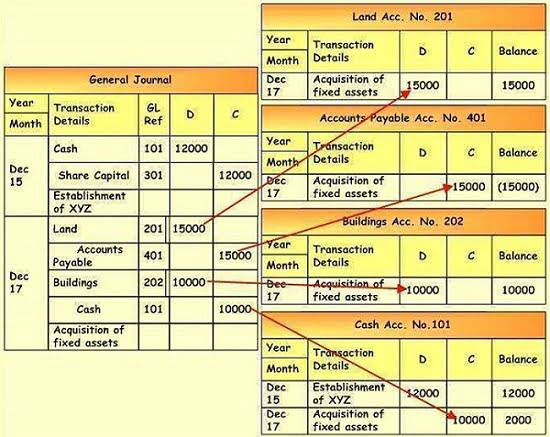Incremental Cost: Definition, How to Calculate, and Examples

Thus if fixed incremental cost cost were to double, the marginal cost MC would not be affected, and consequently, the profit-maximizing quantity and price would not change. This can be illustrated by graphing the short run total cost curve and the short-run variable cost curve. Each curve initially increases at a decreasing rate, reaches an inflection point, then increases at an increasing rate. The only difference between the curves is that the SRVC curve begins from the origin while the SRTC curve originates on the positive part of the vertical axis.
- For example, the incremental cost of an employee’s termination includes the cost of additional benefits given to the person as a result of the termination, such as the cost of career counseling.
- Identifying such costs is very important for companies as it helps them decide whether the additional cost is in their best interest.
- The use of incremental analysis can help businesses identify the potential financial outcomes of one business action or opportunity compared to another.
- Incremental cost of capital is the weighted-average cost of new debt and equity issuances during a financial reporting period.
- Incremental costs help to determine the profit maximization point for a company or when marginal costs equal marginal revenues.
- However, incremental cost refers to the extra cost incurred as a result of the decision to expand output.
What’s a Limitation of Incremental Analysis?
When a company’s incremental cost of capital rises, investors take it as a warning that a company has a riskier capital structure. Investors begin to wonder whether the company may have issued too much debt given their current cash flow and balance sheet. A turning point in the rise of a company’s incremental cost of capital happens when investors avoid a company’s debt due to worries over risk. Unfortunately, this can result in investors pulling back from the company’s shares due to worries over the debt load or even dilution depending on how additional capital is to be raised.
- Therefore, the cost to produce the special order is $200 per item ($125 + $50 + $25).
- This allocation can even change in the future course of business of ABC Ltd. when supposedly, if it chooses to drop product ‘X,’ then product ‘Y’ or any other product might become the primary user of the cost.
- The overall cost incurred as a result of producing an additional unit of product is referred to as incremental cost.
- When the marginal social cost of production is less than that of the private cost function, there is a positive externality of production.
- When evaluating a business segment’s profitability, only relevant incremental costs that can be directly linked to the business segment are examined.
- Thus, the above are some benefits that the procedure of marginal cost analysis contributes to the entire manufacturing process.
Incremental Cost Vs Incremental Revenue
It is important to consider incremental cost when making decisions that involve increasing or decreasing production levels. For example, if a company is considering expanding its operations, it will need to compare the incremental cost of production with the expected revenue from selling the additional units. Only by taking both total cost and incremental cost into income statement account can businesses make informed decisions that will maximize their profits.
- Since incremental costs are the costs of manufacturing one more unit, the costs would not be incurred if production didn’t increase.
- Conversely, there may be levels of production where marginal cost is higher than average cost, and the average cost is an increasing function of output.
- If a business is earning more incremental revenue (or marginal revenue) per product than the incremental cost of manufacturing or buying that product, the business earns a profit.
- Bulk orders are frequently discounted, introducing a variable into your incremental calculation.
- A consumer may consume a good which produces benefits for society, such as education; because the individual does not receive all of the benefits, he may consume less than efficiency would suggest.
- It goes the opposite way when the marginal cost of (n+1)th is higher than average cost(n).
Decisions taken based on marginal costs

Incremental analysis is a decision-making tool used in business to determine the true cost difference between alternative business opportunities. As the name suggests, both are meant to calculate the cost and revenue for extra or addition production of goods and services. If we look at our above example, the primary user is product ‘X’ which was already being manufactured at the plant and utilizing the machinery and equipment.
Example of Incremental Analysis

Incremental cost is the total cost incurred due to an additional unit of product being produced. Incremental cost is calculated by analyzing the additional expenses involved in the production process, such as raw materials, for one additional unit of production. https://www.bookstime.com/ Understanding incremental costs can help companies boost production efficiency and profitability.

What is incremental cost and how is it calculated
Producing the products, however, might bring incremental costs because of the downsizing. The management must look at the additional cost of producing the products under one roof. This could mean more deliveries from vendors or even more training costs for employees. Essentially, the incremental cost is largely related to decisions and business decisions. The marginal cost is used to optimize output, whereas the incremental cost is used to determine the profitability of activities. This shows the incremental cost of scaling monthly production volumes by 5,000 units is $20,000.
Economies of scale apply to the long run, a span of time in which all inputs can be varied by the firm so that there are no fixed inputs or fixed costs. Conversely, there may be levels of production where marginal cost is higher than average cost, and the average cost is an increasing function of output. Since fixed costs do not vary with (depend on) changes in quantity, MC is ∆VC/∆Q.

Short run marginal cost is the change in total cost when an additional output is produced in the short run and some costs are fixed. On the right side of the page, the short-run marginal cost forms a U-shape, with quantity on the x-axis and cost per unit on the y-axis. Understanding a company’s incremental costs is important for decisions like setting pricing, production levels, make vs. buy, adding product features, and more. Manufactures look at incremental costs when deciding to produce another product. Often times new products can use the same assembly lines and raw materials as currently produced products. Unfortunately, most of the time when manufacturers take on new product lines there are additional costs to manufacture these products.
If the LRIC rises, it is likely that a corporation will boost product pricing to meet the costs; the inverse is also true. Forecast LRIC is visible on the income statement, where revenues, cost of goods sold, and operational expenses will be altered, affecting the company’s total long-term profitability. They are always composed of variable costs, which are the costs that fluctuate with production volume.

